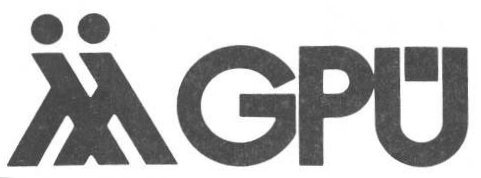|
 |
|||||||||
|
The Gay Peoples Union (or GPU) was founded as a social service agency dedicated to the needs of the gay community, and concurrently dedicated to educating the community at large about gays and lesbians. The UW Digital Collections has summarized the relevance and history of the GPU very well in the following statement: Gay Peoples Union (GPU) was the most important gay and lesbian rights organization in Milwaukee during the 1970s. Taking distance from the radical politics of the New Left, its members adopted a politically moderate approach to social change, emphasizing education and legal reform. GPU began as a University of Wisconsin-Milwaukee (UWM) student organization, the Gay Liberation Organization, which held its first meeting on March 5, 1970. From the beginning, there was disagreement between members who supported a revolutionary, broad-based politics and those wishing to pursue the single-issue of "homosexual liberation" through non-militant activism. In fall 1970, the more radical members of GLO withdrew and formed the Milwaukee Gay Liberation Front. The remaining members of GLO reorganized as the Gay Peoples Union and focused on educational programs and social activities. By fall 1971, GPU's affiliation with the university faded, and the organization took on a community-wide character. The organization actively embraced mainstream and alternative media outlets in order to educate the general public about homosexuality. It produced the first regularly scheduled, scripted gay and lesbian radio program in the nation, Gay Perspective, which aired on Milwaukee station WZMF from February to June 1971 and then on WUWM from July 1971 to May 18, 1972. The organization's monthly news magazine, GPU News, started publication in October 1971 and lasted a full decade. GPU collaborated with the mainstream media at least twice, working with the Milwaukee Journal in February 1972 on its six-part series, "The Gay Revolution," and with WTMJ-TV in September 1973 on a five-part series titled "Some Call Them Gay." GPU also took a leadership role in building an infrastructure for the emerging local gay and lesbian community. It established Milwaukee's first gay and lesbian community center, operated a telephone counseling service and a venereal disease examination center, and organized a legal defense committee to assist gays and lesbians with paying for legal representation. During the 1980s, a host of other gay and lesbian groups emerged within existing social institutions such as businesses, sports, theater, health care, addiction recovery programs, and the media. Concurrently, the rise of lesbian separatism and the autonomous organizing of gays and lesbians of color seemed to undercut the relevance of a broad-based group such as GPU. The organization faded in importance by the early 1980s, although it continues to exist today." The GPU was the "first" at many things: they opened the first gay/lesbian community center (Farwell Community Center, 1568 N. Farwell), the first gay health clinic (the GPU Venereal Disease Clinic, at one time offering testing 4 days a week- and which has since evolved into the BESTD Clinic and still operates 40 years later), a regular newsletter and membership-mailed magazine, hotline, and numereous other firsts. The GPU was also the first organization in Milwaukee to host an event that had Pride appeal, with over 350 people attending the GPU Ball in 1974. Other dances and parties were hosted in the years that followed, and by 1981, a subgroup of the GPU, the Milwaukee Pride Week Committee, was coordinating activities of various organizations and also organized marches/ parades, rallies, and street festivals. (View the Milwaukee Pride Celebration TimeLine. Pride celebrations would eventually be organized by a more formal group, the Milw. Gay/Lesbian Pride Committee (MGLPC), and eventually PrideFest.) The GPU largely went into decline after about 1985. Its magazine, the GPU News, for 10 years the best source of local gay/ lesbian news, was folded after the January 1981 issue after not enough volunteers were available to create it. During the 1990's and into the 2000's, the organization existed basically in name only, although it continued to run a phone line. The GPU also held a large library of books; it was believed to be in the possession of one of its founders, Eldon Murray; but when Eldon died, the collection's disposition was not noted. Officially, the GPU still existed as of 2021, as the required annual report is filed with the State each year by longtime member Si Smits. But there has been no active organization or activities known in the past 10-15 years at least. |
|
Credits: Web site concept, contents, design and arrangement by Don Schwamb.
Last updated: September-2022.

This work is licensed under a
Creative Commons Attribution-NonCommercial-ShareAlike 4.0 International License.